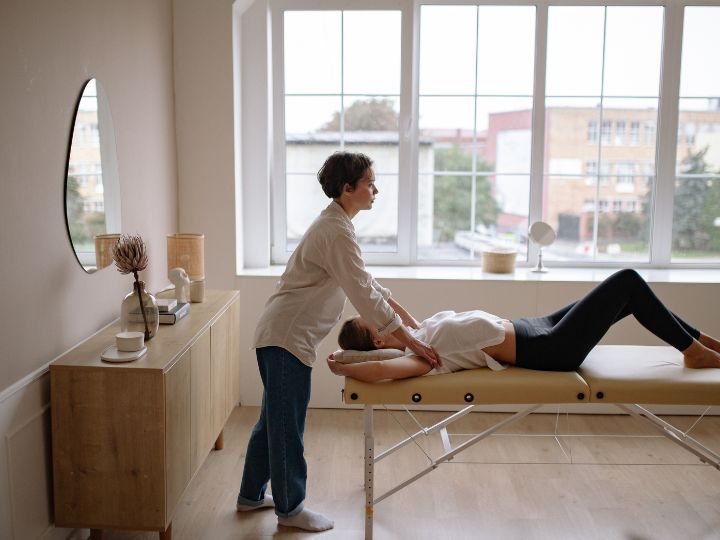For many individuals dealing with physical limitations, speech difficulties, or challenges with daily activities, traditional therapy settings have been the go-to solution. However, conventional approaches don’t always yield the desired results for everyone. When progress plateaus or the clinical environment feels limiting, it may be time to explore alternative therapeutic approaches that can be implemented in the comfort of your own home.
Understanding Why Traditional Therapy May Fall Short
Traditional therapy typically takes place in clinical settings—hospitals, rehabilitation centers, or outpatient clinics. While these environments work well for many patients, several factors can limit their effectiveness: Environmental Disconnect: The skills learned in a clinical setting don’t always translate seamlessly to home life. A patient might master walking on smooth clinic floors but struggle with their home’s carpeted surfaces or stairs. Time Constraints: Standard therapy sessions often last 30-60 minutes, which may not provide enough time for meaningful progress, especially for complex conditions. Motivation Challenges: The sterile clinical environment can feel impersonal, potentially affecting patient engagement and motivation. Transportation Barriers: Getting to and from appointments can be exhausting or impossible for some patients, leading to missed sessions and inconsistent care.The Promise of Home-Based Alternatives
Home-based therapy approaches offer several unique advantages that can overcome the limitations of traditional settings:1. Contextual Learning
Practicing skills in the actual environment where they’ll be used daily creates more meaningful and lasting improvements. A speech therapist can work with a patient using their own kitchen items for naming exercises, or a physical therapist can help navigate the specific layout of a patient’s bedroom and bathroom.2. Family Integration
Home therapy naturally involves family members, creating a support system that extends beyond scheduled sessions. Caregivers learn techniques they can reinforce throughout the day, multiplying the therapeutic impact.3. Personalized Scheduling
Without the constraints of clinic hours, therapy can be scheduled when patients are most alert and receptive, whether that’s early morning or evening.4. Reduced Stress
Eliminating travel and waiting room anxiety allows patients to focus entirely on their therapeutic goals in a comfortable, familiar environment.Innovative Home-Based Approaches
Technology-Enhanced Therapy
Modern technology has revolutionized home therapy possibilities. Virtual reality systems can create immersive environments for stroke rehabilitation, while specialized apps provide speech therapy exercises with real-time feedback. Wearable devices track movement patterns and provide data to therapists for remote monitoring.Task-Specific Training
Rather than generic exercises, home therapy can focus on activities that matter most to the individual. This might include:- Practicing transfers from a favorite chair
- Working on fine motor skills while preparing preferred meals
- Speech exercises using familiar names and places
Environmental Modifications
Home therapists can identify and implement modifications that traditional clinic-based providers might miss. Simple changes like rearranging furniture, adding grab bars, or adjusting lighting can significantly impact daily function.Intensive Therapy Models
Some home programs offer intensive therapy schedules—multiple hours per day over shorter periods—which research suggests can accelerate progress for certain conditions.Creating Your Home Therapy Plan
Assessment and Goal Setting
Begin with a comprehensive evaluation of your current abilities, home environment, and personal goals. Consider what activities are most important to your quality of life and build therapy around these priorities.Establishing Routines
Consistency is crucial for therapeutic success. Create dedicated therapy spaces and times that integrate naturally into your daily routine. This might mean speech exercises during morning coffee or balance training while dinner cooks.Tracking Progress
Maintain detailed records of exercises, challenges, and achievements. Many home therapy programs now include digital tracking tools that help visualize progress over time.Safety Considerations
Ensure your home therapy space is safe and appropriate. Remove trip hazards, ensure adequate lighting, and have necessary equipment readily available. Always work within prescribed safety parameters.Overcoming Common Challenges
Maintaining Motivation
Without the external structure of clinic appointments, maintaining motivation can be challenging. Set small, achievable goals, celebrate progress, and vary routines to prevent boredom.Technical Difficulties
If using technology-based approaches, have backup plans for technical failures. Keep printed exercise guides and maintain communication channels with your therapy team.Family Dynamics
While family involvement is generally beneficial, it can sometimes create tension. Establish clear boundaries and roles to maintain positive therapeutic relationships.Professional Support in Home Settings
While many alternative approaches can be self-directed, professional guidance ensures safety and effectiveness. Home-based therapy services bridge the gap between clinical expertise and home comfort. Companies like Stern At Home Therapy specialize in bringing qualified physical, occupational, and speech therapists directly to patients’ homes. These professionals provide expert assessment, personalized treatment plans, and ongoing support while working within the patient’s actual living environment. Having professional guidance ensures that alternative approaches are implemented safely and effectively, with therapists available to adjust strategies based on real-world results.Integrating Alternative Approaches
The most effective home therapy programs often combine multiple approaches. A comprehensive plan might include:- Professional in-home therapy sessions for expert guidance and assessment
- Technology-based exercises for daily practice
- Family-supported activities for continuous reinforcement
- Environmental modifications for safer, easier daily living
Success Stories and Evidence
Research increasingly supports the effectiveness of home-based therapy alternatives. Studies have shown that patients receiving therapy in their home environment often achieve equal or better outcomes compared to traditional clinic-based care, particularly in areas like:- Stroke rehabilitation
- Post-surgical recovery
- Speech and language development
- Management of chronic conditions
Moving Forward
When traditional therapy hasn’t provided the expected results, don’t lose hope. Alternative home-based approaches offer new pathways to recovery and improvement. Start by:- Evaluating what aspects of traditional therapy haven’t worked for you
- Researching available home-based options in your area
- Consulting with healthcare providers about transitioning to home therapy
- Creating a supportive home environment for therapeutic activities
- Setting realistic goals and tracking progress


